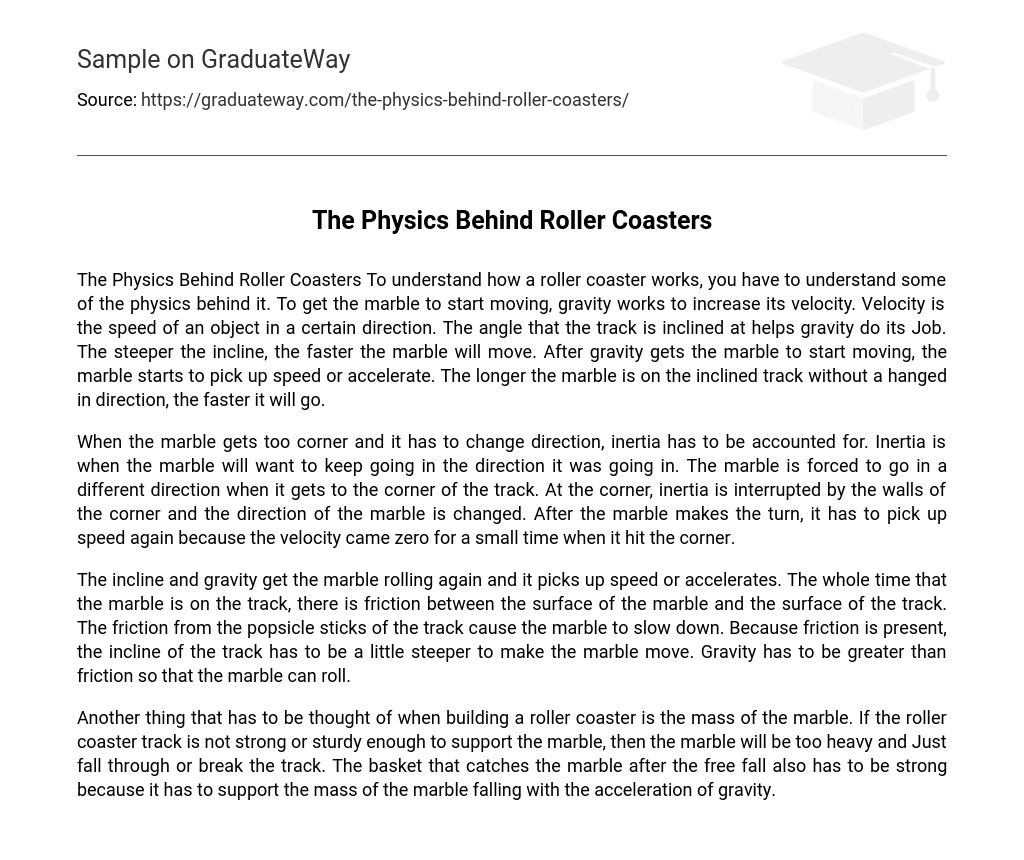To understand how a roller coaster works, you have to understand some of the physics behind it. To get the marble to start moving, gravity works to increase its velocity. Velocity is the speed of an object in a certain direction. The angle that the track is inclined at helps gravity do its Job. The steeper the incline, the faster the marble will move. After gravity gets the marble to start moving, the marble starts to pick up speed or accelerate. The longer the marble is on the inclined track without a hanged in direction, the faster it will go.
When the marble gets too corner and it has to change direction, inertia has to be accounted for. Inertia is when the marble will want to keep going in the direction it was going in. The marble is forced to go in a different direction when it gets to the corner of the track. At the corner, inertia is interrupted by the walls of the corner and the direction of the marble is changed. After the marble makes the turn, it has to pick up speed again because the velocity came zero for a small time when it hit the corner.
The incline and gravity get the marble rolling again and it picks up speed or accelerates. The whole time that the marble is on the track, there is friction between the surface of the marble and the surface of the track. The friction from the popsicle sticks of the track cause the marble to slow down. Because friction is present, the incline of the track has to be a little steeper to make the marble move. Gravity has to be greater than friction so that the marble can roll.
Another thing that has to be thought of when building a roller coaster is the mass of the marble. If the roller coaster track is not strong or sturdy enough to support the marble, then the marble will be too heavy and Just fall through or break the track. The basket that catches the marble after the free fall also has to be strong because it has to support the mass of the marble falling with the acceleration of gravity.





